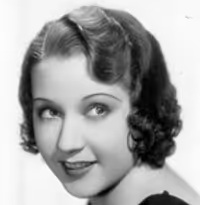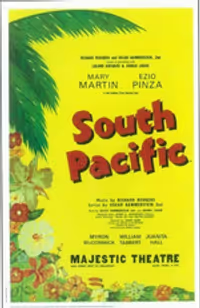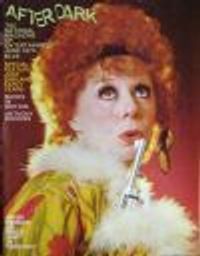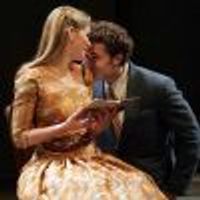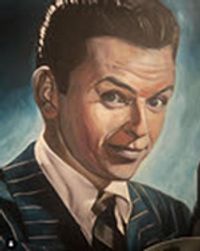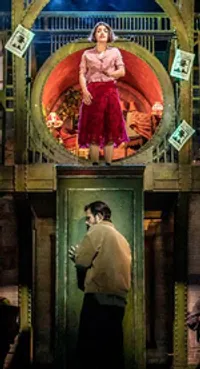Operatic Porgy and Bess vs. Broadway Porgy
#25Operatic Porgy and Bess vs. Broadway Porgy
Posted: 9/30/19 at 8:08pm
poisonivy2 said: "I wonder if the Met tonight will have a moment of silence for Jessye Norman who passed away today ![]() "
"
What terrible news! Thank you for the beauty you brought to the world, Ms. Norman. Rest in peace.
#26Operatic Porgy and Bess vs. Broadway Porgy
Posted: 9/30/19 at 10:29pm
The performance is being dedicated to Ms. Norman. What a loss. But meanwhile, I'd love to hear the reactions of the BWW'ers at tonight's performance.
#27Operatic Porgy and Bess vs. Broadway Porgy
Posted: 10/1/19 at 1:26amI was at the performance tonight. It was indeed dedicated to the memory of Jessye Norman. This is a beautiful production with a top-notch cast. I saw the recent Broadway production, but after seeing tonight’s performance, I can’t imagine wanting to revert back to the “Broadway” iteration after hearing the full glorious opera. It’s so obviously written as an opera and meant to be sung like one. If you can, do try to see this one.
#28Operatic Porgy and Bess vs. Broadway Porgy
Posted: 10/1/19 at 1:30am
Jesus this was phenomenal. If you're an opera fan or a musical fan or a both fan, I strongly recommend this. The cast is great across the board and there's no denying that this orchestra and chorus puts even the biggest and flashiest Broadway productions to shame. The sounds coming from that stage frequently gave me chills. Not to mention the sets and costumes were absolutely stunning. Go see this especially if you love the Lincoln Center/Beaumont classical musical revivals. It felt a lot like one of Sher's revivals (largely because it used much of his usual creative team). He was actually initially attached as the director for this production.
Btw, I stopped by where the standing room is up in the family circle and the view looked pretty great. Just bring binoculars for the arias.
In regards to how this compared to the Broadway revival, I loved both. I just think P&B is an incredible score. The Broadway production kept all the major music, it just had dialogue and new orchestrations and just seemed more acting based. This feels much more faithful to the actual material which I really respected.
Just go see this.
#29Operatic Porgy and Bess vs. Broadway Porgy
Posted: 10/1/19 at 8:03am
The fall run is sold out, but there are tickets available for the winter series of performances.
#30Operatic Porgy and Bess vs. Broadway Porgy
Posted: 10/1/19 at 4:17pm
For those who were blown away by Angel Blue, she's been doing amazing things for several years now.
Here's her in Tosca:
https://www.youtube.com/watch?v=hdNVag1U7A4
Here she is as Clara in a different production of Porgy:
https://www.youtube.com/watch?v=rZupDr5M5Ac
#31Operatic Porgy and Bess vs. Broadway Porgy
Posted: 10/1/19 at 5:00pm
Out of curiosity, is the goat cart omitted from this production? Is the line at the end of the opera changed from "Bring my goat" to "Bring my cane"?
I wonder if this aspect of the story/character is gone for good.
#32Operatic Porgy and Bess vs. Broadway Porgy
Posted: 10/1/19 at 5:06pm
joevitus said: "Out of curiosity, is the goat cart omitted from this production? Is the line at the end of the opera changed from "Bring my goat" to "Bring my cane"?
I wonder if this aspect of the story/character is gone for good."
Porgy arrives on the goat cart but at the end he asks for it and for whatever reason it’s not brought to him so he walks off with a cane, it was one part of the production I found confusing since he specifically asks for his goat cart.
#33Operatic Porgy and Bess vs. Broadway Porgy
Posted: 10/1/19 at 5:44pmI saw Angel Blue as Musetta in La Bohème at the Met last season and she was sensational. She’s an incredible performer.
#34Operatic Porgy and Bess vs. Broadway Porgy
Posted: 10/2/19 at 12:11am
poisonivy2 said: "joevitus said: "Out of curiosity, is the goat cart omitted from this production? Is the line at the end of the opera changed from "Bring my goat" to "Bring my cane"?
I wonder if this aspect of the story/character is gone for good."
Porgy arrives on the goat cart but at the end he asks for it and for whatever reason it’s not brought to him so he walks off with a cane, it was one part of the production I found confusing since he specifically asks for his goat cart."
Thanks!
#35Operatic Porgy and Bess vs. Broadway Porgy
Posted: 10/2/19 at 2:23pm
On Monday night, Porgy arrived on a kind of cart/scooter. At the end of the opera he called out ”bring me my cart,” but he ended up leaving the stage using his crutch.
I miss the goat.
The singers and orchestra sounded glorious, but I was surprised at how hard it was to understand the lyrics. I know the opera very well, so it wasn’t a problem for me, but I was in row M of the orchestra, and I saw many people around me using the super title displays.
#36Operatic Porgy and Bess vs. Broadway Porgy
Posted: 10/2/19 at 2:44pm
Thanks.
This production sounds SO magnificent.
#37Operatic Porgy and Bess vs. Broadway Porgy
Posted: 10/2/19 at 3:29pm
HeyMrMusic said: "I saw Angel Blue as Musetta in La Bohème at the Met last season and she was sensational. She’s an incredible performer."
I've seen Boheme about 87 billion times at the Met and she was by far my favorite Musetta that I've ever seen. Such a wonderful singer and performer. I went to opening night last week and she sounded heavenly.
RainyAgwe
Chorus Member Joined: 7/28/18
#38Operatic Porgy and Bess vs. Broadway Porgy
Posted: 10/3/19 at 9:52amUnfortunately my only experience with Porgy is the recent broadway revival, but I thought it was truly magnificent. Audra/Norm were both absolutely amazing!
RainyAgwe
Chorus Member Joined: 7/28/18
#39Operatic Porgy and Bess vs. Broadway Porgy
Posted: 10/3/19 at 9:52amUnfortunately my only experience with Porgy is the recent broadway revival, but I thought it was truly magnificent. Audra/Norm were both absolutely amazing!
#40Operatic Porgy and Bess vs. Broadway Porgy
Posted: 10/3/19 at 1:35pm
I’m always amazed at the thought of George Gershwin and DuBose Heyward renting a theater in the middle of the Great Depression to stage a dark four hour opera with a cast of all classically trained African Americans. Money could not have been the motive.
Today in so many cases musicals are born of music groups or films already known to be of great popularity. Take no risks, produce nothing of greatness.
Very attractive blog and incisive commentary.
#41Operatic Porgy and Bess vs. Broadway Porgy
Posted: 10/3/19 at 2:53pm
"Money could not have been the motive."
What a weird assumption! The novel it is based on, Porgy, by DuBose Heyward was a best-seller in the 1920's, and the play version of it, co-authored by Heyward and his wife Dorothy, had been one of the Theater Guild's biggest hits. I'm sure Gershwin was as interested in art as money, as was director Rouben Mamoulian, who directed both the dramatic and operetic version, but they clearly expected a popular success. The reason the work's title was changed was so people wouldn't assume this was a revival but a new iteration of the material.
#42Operatic Porgy and Bess vs. Broadway Porgy
Posted: 10/5/19 at 7:22pm
Knowledgeable opera fans will likely already be aware of this, but for those fellow novices who might not be, in addition to the future cinema screenings there are going to be a few audio/radio broadcasts of this production. I think the next (first?) one is on Wednesday 16 October, but there are a few different options if you follow your nose through the various links on the below page. (For the time zone-challenged among us who are interested, the "Saturday matinee" option in early February might be the best bet.)
https://www.metopera.org/season/radio/
#43Operatic Porgy and Bess vs. Broadway Porgy
Posted: 10/5/19 at 7:55pmI bought another ticket to see this in January with Kevin Short who is also a distinguished Porgy.
Dollypop
Broadway Legend Joined: 5/15/03
#44Operatic Porgy and Bess vs. Broadway Porgy
Posted: 10/5/19 at 9:33pmI've seen PORGY AND BESS several times at the Met. The last time (going back perhaps 25 years) featured a soprano of ample girth as Bess. Luckily the singer who.played Crown was quite muscular and was able to lift her without difficulty. However as he carried Bess off, the soprano let out what was supposed to be a tragic moan but was totally unconvincing so it became comical and the audience laughed. It was a Saturday matinee and broadcast live on the radio so millions of people heard how the opera suddenly became a comedy.
#45Operatic Porgy and Bess vs. Broadway Porgy
Posted: 10/5/19 at 11:49pm
joevitus said: ""Money could not have been the motive."
What a weird assumption! The novel it is based on, Porgy, by DuBose Heywardwas a best-seller in the 1920's, and the play version of it, co-authored by Heyward and his wife Dorothy,had been one of the Theater Guild's biggest hits. I'm sure Gershwin was as interested in art as money, as was director Rouben Mamoulian, who directed both the dramatic and operetic version, but they clearly expected a popular success. The reason the work's title was changed was so people wouldn't assume this was a revival but a new iteration of the material."
For someone who has been here for such a short time, you have quickly developed a reputation for firing out critical opinions that are not hindered by any necessity of being accurate. You lack understanding of the magnitude of the Great Depression and its effects on Broadway.
In the 1929-31 season 233 productions premiered. The number of productions fell each year afterwards through 1939-40 when it dipped to 98 productions. Over 20,000 theater people in New York lost their livelihood. Some theaters dropped their minimum ticket price to 25 cents, with a high price of a dollar.
Since my parents grew up during the depression, I might have an advantage on you. People were afraid and anxious during that period. They did not have the advantage of knowing that the worst war that the world had ever seen would have the side effect of making this country wealthy and restoring them to financial stability.
A large proportion of Broadway productions were aimed at escapism, and often with a note of hope. Green Grow the Lilacs, Eugene O'Neill's only comedy, Ah Wilderness, musical comedies like Gershwin's Girl Crazy, featuring the debut of Ethel Merman, and Cole Porter's classics, droll and witty Noel Coward. The duo of Moss and Kaufman authored eight plays, most of which are still with us: Dinner at Eight, You Can't Take It With You and The Man Who Came to Dinner.
You may try, but I think you will fail in finding another Porgy and Bess in the 30s. Gershwin and Heyward's motive for producing this and other works was to help keep Broadway people employed.
viagalactica6
Chorus Member Joined: 7/9/08
#46Operatic Porgy and Bess vs. Broadway Porgy
Posted: 10/6/19 at 12:15am
It is definitely an opera and not a musical!
#47Operatic Porgy and Bess vs. Broadway Porgy
Posted: 10/6/19 at 2:57am
OlBlueEyes said: "joevitus said: ""Money could not have been the motive."
What a weird assumption! The novel it is based on, Porgy, by DuBose Heywardwas a best-seller in the 1920's, and the play version of it, co-authored by Heyward and his wife Dorothy,had been one of the Theater Guild's biggest hits. I'm sure Gershwin was as interested in art as money, as was director Rouben Mamoulian, who directed both the dramatic and operetic version, but they clearly expected a popular success. The reason the work's title was changed was so people wouldn't assume this was a revival but a new iteration of the material."
For someone who has been here for such a short time, you have quickly developed a reputation for firing out critical opinions that are not hindered by any necessity of being accurate. You lack understanding of the magnitude of the Great Depression and its effects on Broadway.
In the 1929-31 season 233 productions premiered. The number of productions fell each year afterwards through 1939-40 when it dipped to 98 productions. Over 20,000 theater people in New York lost their livelihood. Some theaters dropped their minimum ticket price to 25 cents, with a high price of a dollar.
Since my parents grew up during the depression, I might have an advantage on you. People were afraid and anxious during that period. They did not have the advantage of knowing that the worst war that the world had ever seen would have the side effect of making this country wealthy and restoring them to financial stability.
A large proportion of Broadway productions were aimed at escapism, and often with a note of hope. Green Grow the Lilacs, Eugene O'Neill's only comedy, Ah Wilderness, musical comedies likeGershwin's Girl Crazy, featuring the debut of Ethel Merman, and Cole Porter's classics, droll and witty Noel Coward. The duo of Moss and Kaufman authored eight plays, most of which are still with us: Dinner at Eight, You Can't Take It With You and The Man Who Came to Dinner.
You may try, but I think you will fail in finding another Porgy and Bess in the 30s. Gershwin and Heyward's motive for producing this and other works was to help keep Broadway people employed."
Have zero idea what all that trivia has to do with Porgy and Bess being based on a hit play and best-selling novel that, of course, the participants fully expected to be a big hit in its new form. If you want to produce some, you know, evidence, that they all went into it expecting it to be a flop, please share it. Otherwise, just own that your assumption is really weird.
#48Operatic Porgy and Bess vs. Broadway Porgy
Posted: 10/6/19 at 10:15am
I don;t know why the Gershwin and Heyward could not have intended for Porgy and Bess to be an artistic project AND a commercial hit. The two are not mutually exclusive. Gershwin traveled to South Carolina and anyone who hears the score can hear the love he put into this work. However he also made several performing editions for B'way.
It is a shame he died in 1937 and did not live to see Porgy and Bess performed in opera houses around the world.
#49Operatic Porgy and Bess vs. Broadway Porgy
Posted: 10/6/19 at 7:04pm
I agree. I don't think the goal was just to have a hit show, I think their goal was to make a work of art, but they thought that work of art had every chance of popular success based on it's previous incarnations and, of course, the quality of the score.
Videos


